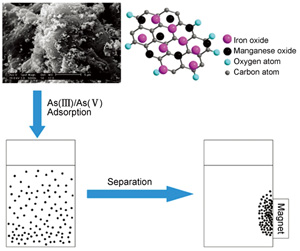 PDF(3038 KB)
PDF(3038 KB)


 PDF(3038 KB)
PDF(3038 KB)
 PDF(3038 KB)
PDF(3038 KB)
铁锰氧化物/碳基复合材料的制备及其对水中砷的去除
 ({{custom_author.role_cn}}), {{javascript:window.custom_author_cn_index++;}}
({{custom_author.role_cn}}), {{javascript:window.custom_author_cn_index++;}}Preparation of Iron and Manganese Oxides/Carbon Composite Materials for Arsenic Removal from Aqueous Solution
 ({{custom_author.role_en}}), {{javascript:window.custom_author_en_index++;}}
({{custom_author.role_en}}), {{javascript:window.custom_author_en_index++;}}
| {{custom_ref.label}} |
{{custom_citation.content}}
{{custom_citation.annotation}}
|
/
| 〈 |
|
〉 |